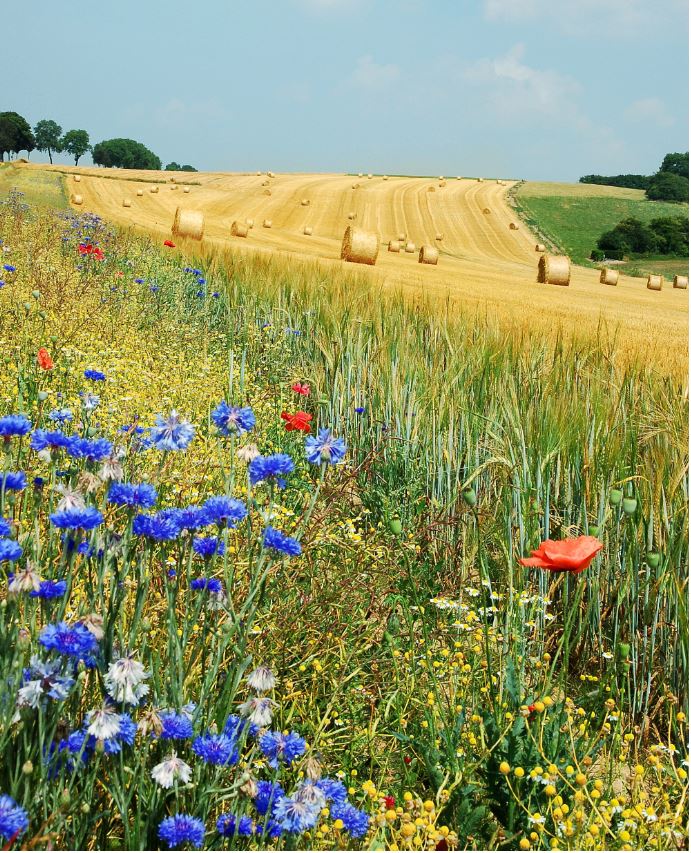In this post, Carsten Brühl introduces a recently published discussion paper on management practices for conservation in agricultural landscapes and their potential pesticide exposure.
Flower strips, the planting of wild plants next to agricultural fields, are a popular management option for biodiversity enrichment of semi-natural structures and habitats in the agricultural landscape. However, it is unclear how these areas are affected by the use of pesticides in neighbouring crops.

Pesticide use has many unknowns in terms of interactions between various active substances in pesticide mixes or application sequences. There are many unknown direct and indirect effects on non-target organisms and additionally lacking control of applications following good agricultural practice.
Flower strips are in most cases exempted from distance regulations when applying pesticides. It can therefore be assumed that flower strips are contaminated by over-spray and drift of pesticides; narrow strips (< 3 m) are likely affected the most. Reconsidering the concept of flower strips, the introduction of a minimum width ranging from 6 -9 meters is highly recommended in order to reinforce their positive effect.
The discussion paper “Flower strips and pesticides – trap or habitat?” by Gerti Fluhr-Meyer and Wolfram Adelmann gives a good overview of the current dilemma and highlights especially the situation in Bavaria.
The paper mentioned above is in German. English speakers can find more on the subject of field margins and their exposure in a report by the German Environment Agency: “Protection of Biodiversity in the Risk Assessment and Risk Management of Pesticides (Plant Protection Products & Biocides) with a Focus on Arthropods, Soil Organisms and Amphibians”, section “Characterization of exposed habitats and their biocoenosis”.
